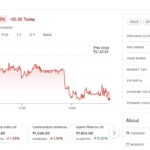Bollinger Bands: A Comprehensive Guide for Traders
If you’re looking for a technical analysis tool to help you in your trading, Bollinger Bands might just be what you need. Developed by John Bollinger in the 1980s, Bollinger Bands are a popular and widely used indicator in the financial markets. In this article, we’ll dive deep into Bollinger Bands, what they are, how they work, and how you can use them in your trading strategy.
What are Bollinger Bands?
Bollinger Bands are a technical analysis tool that consists of three lines: a simple moving average (SMA) in the middle, and an upper and lower band that are placed two standard deviations away from the SMA. The bands dynamically adjust to market volatility, expanding and contracting as the volatility of the market changes.
The components of Bollinger Bands
- Simple Moving Average (SMA)
- Upper Band
- Lower Band
- Standard Deviation
How do Bollinger Bands work?
The upper and lower bands of Bollinger Bands are two standard deviations away from the SMA. This means that the bands contain 95% of the price action, making them a useful tool for traders to identify overbought and oversold conditions.
When the price is trading within the bands, it’s considered to be in a normal range. However, when the price reaches the upper band, it’s considered to be overbought, and when it reaches the lower band, it’s considered to be oversold. Traders can use this information to make trading decisions, such as taking profits when the price reaches the upper band or buying when the price reaches the lower band.
Bollinger Band Squeeze
A Bollinger Band Squeeze occurs when the bands narrow, indicating that the price is consolidating and volatility is low. Traders can use this information to prepare for a potential breakout and adjust their trading strategy accordingly.
Bollinger Band Width
The Bollinger Band Width is a technical analysis indicator that measures the distance between the upper and lower bands of Bollinger Bands. When the Bollinger Band Width is narrow, it indicates low volatility, and when it’s wide, it indicates high volatility.
How to use Bollinger Bands in your trading strategy
Bollinger Bands can be used in a variety of ways to help traders make trading decisions. Here are a few ways to use Bollinger Bands in your trading strategy:
1. Identifying Overbought and Oversold Conditions
Traders can use Bollinger Bands to identify overbought and oversold conditions in the market. When the price reaches the upper band, it’s considered to be overbought, and when it reaches the lower band, it’s considered to be oversold.
2. Identifying Trend Reversals
When the price breaks out of the bands, it can be a sign of a trend reversal. Traders can use this information to make trading decisions, such as taking profits or entering a new position.
3. Confirming Price Action
Traders can use Bollinger Bands to confirm price action. For example, if the price is trending higher and it’s consistently trading above the middle band, it can be a sign of a bullish trend.
Bollinger Bands: Pros and Cons
Like any technical analysis tool, Bollinger Bands have their pros and cons. Here are a few to consider:
Pros
- Bollinger Bands are a versatile and widely used indicator in the financial markets.
- They can be used in a variety of ways to help traders make trading decisions.
- They dynamically adjust to market volatility, making them useful in different market conditions.





![Mastering Advance Option Chain Tool [AOC]: A Trader’s Key to Success](https://seorub.com/wp-content/uploads/2023/07/A-trader-life-with-advance-option-chain-tool-AOC1-150x150.jpg)
